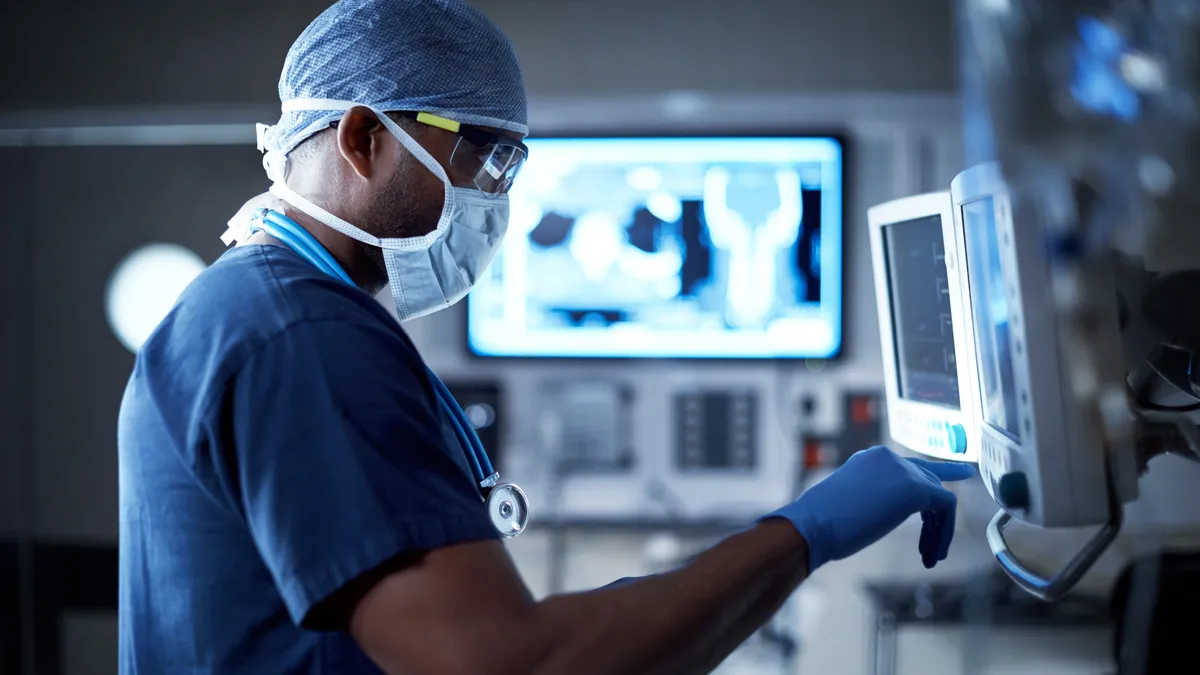Dive Brief:
- Computer graphics chipmaker Nvidia and the American College of Radiology (ACR) said Monday they are collaborating on an open architecture artificial intelligence system to help radiologists create diagnostic algorithms at their local institutions.
- Nvidia will integrate its Clara AI toolkit, a computational platform developers can use to create and deploy medical imaging workflows, with ACR's AI Lab, a new software platform that will be made available to more than 38,000 radiology professionals through ACR's Data Science Institute. Shared models will allow radiologists to develop AI algorithms with their own data at their own facilities, protecting patient data, the two parties said.
- ACR and Nvidia said the joint program was piloted for three months by Massachusetts General Hospital and the Ohio State University.
Dive Insight:
The American College of Radiology's collaboration with Nvidia, best known for its chips that power computer game graphics, aims to use the company's Clara AI toolkit for medical imaging to allow radiologists to customize algorithms to their own practices.
In a pilot project with the Ohio State University, the platform was used to develop an enhanced cardiac computed tomography angiography model. OSU imported and customized a model developed by Massachusetts General and Brigham and Women's Hospital's Center for Clinical Data Science. OSU then labeled its own data for further testing and improvement of the algorithm, reducing training, validation and testing times, ACR and Nvidia said. The architecture enabled data aggregation, image annotation, image pre-processing and transformation, algorithm transfer and local computing for algorithm improvement.
Artificial intelligence is being used in medical imaging to automate workflows, speed processing and improve imaging quality, to aid doctors in diagnosing disease. The Cleveland Clinic put AI on its list of Top 10 Medical Innovations in 2019 partly for its potential to improve accuracy in viewing patients' scans. Machine learning algorithms can improve the screening process by highlighting problem areas on images and quickly interpreting the large volumes of data within a physician's electronic medical records system, the hospital said.
With the technology's ability to help radiology departments cope with ever-increasing volumes of diagnostic imaging procedures, the AI-based medical imaging market is on a path to reach $2 billion by 2023, according to one healthcare IT research firm. A different market analysis from Frost & Sullivan found there were more than 100 AI startups focusing on medical imaging in 2018.
Nvidia has been expanding aggressively into new growth areas such as data centers to speed up AI tasks. Last month it paid $6.9 million to acquire Mellanox, a data center networking company. Nvidia's graphics processing units (GPUs) are already being incorporated into a range of medical imaging technologies. Massachusetts General Hospital is testing a type of CT imaging called iterative scanning to send X-rays through the body that depends on a server running eight Nvidia GPUs. The company has also teamed with Siemens on an advanced ultrasound that provides a high-definition view of a fetus, enabling physicians to better detect abnormalities and giving parents a 3D view of their child.
"Enabling a network of artificial intelligence between hospitals will create more robust algorithms, greater efficiencies and likely lead to better patient outcomes," Richard White, chair of the department of radiology at OSU's Wexner Medical Center, said in a press release. "This will give us access to high-quality algorithms that will help us accelerate deep learning and machine learning in healthcare."
Keith Dreyer, chief data science officer at Partners Healthcare and associate professor of radiology at Harvard Medical School, said in the press release algorithms typically work best within the sites where they were trained but don't always represent the population at large. "Training AI models on data from diverse sites helps ensure resiliency while reducing algorithm bias, resulting in improved inference across broader populations," Dreyer said.










